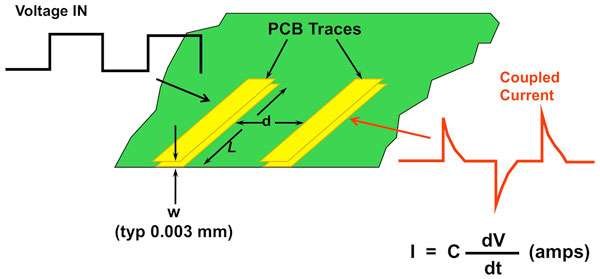At any one point in time, given the Magnetic Field B, we have two states that are possible in a Coil of Insulated Wire. These States are different when a Coil is being Driven, or Induced. What do I mean?
The Two States:
- Driving a Current into a Coil, by applying a Voltage across the Coil.
- An E.M.F (Electromotive Force) that is induced in a Coil.
State One, where we apply a Voltage across a Coil, we are driving the Coil and as a result, the Current will be in one direction, and the Voltage polarity in the other. If the Voltage across a Diode is Negative, no Current can flow. The Diode is said to be Off or Reverse Biased.

When the Mosfet is on, we have applied 10 Volts across the Coil:

State Two, where an E.M.F is induced in the Coil, invoking Electromagnetic Induction, a discovery of Michael Faraday, some 186 years ago. Here we have Voltage and Current in the same direction.The Mosfet (Q1) is switched off, breaking the Voltage Applied across the Coil, the Coil’s Voltage Polarity reverses, and the Diode Conducts. With a positive Voltage across the Diode, it becomes Forward Biased and is now On.

When the Mosfet is switched off, the Magnetic Field B collapses and the Coil’s Voltage Polarity reverses, but the Current flow remains in the same direction.

Where the 100 Volts is the E.M.F Induced by Faradays Law of Induction. This is the Magnetic Field Collapsing, changing over time in proximity of the turns N.
And so, we can see now, how a Coil of Insulated Wire, has Two States!
It’s worth noting, Current flows have been mixed up over the years by Science. It’s not hard to see why; it is confusing to say the least. Let’s look at another example:




So what is the Current, what is it a flow of? The very word “Current” is defined as a movement of something! Yes, isn’t it confusing!

We have learned, in the Mr Preva Experiment, that we can Increase the Total Current in a Localised Circuit and thanks to the wise words of Floyd Sweet we know what this means:
In the specific case of positive charges moving to the right and negative charges to the left, the effect of both actions is positive charge moving to the right.
Current to the right is: I = da+ / dt + da- / dt.
Negative electrons flowing to the left contribute to the current flowing to the right.
Most likely the Positive Charges moving to the Right are Ions. But to be honest, who really knows.
So the Coil Changes, depending on what’s going on. What the Coil is being used for. It is an Active Element, acting like a Battery, when an E.M.F is Induced. Or if a Voltage is applied across it, it is a Passive Component, exhibiting the above mentioned change in Voltage Polarity after the applied Voltage is switched off.
I hope this helps some! Please point out any mistakes also, we want to get this as accurate as possible for others following.
Chris



















 .
.





